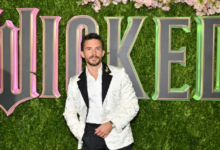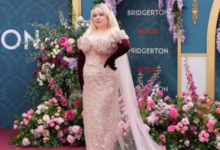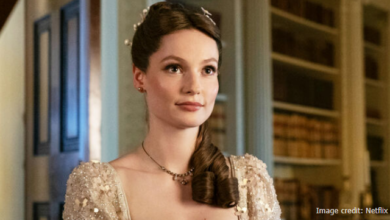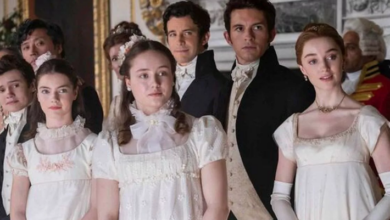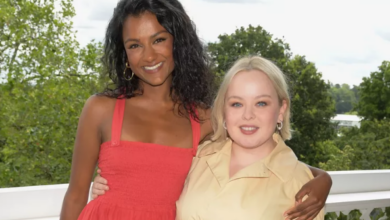‘Queen Charlotte’ Finally Introduces a Queer Romance to the World of ‘Bridgerton’
Brimsley and Reynolds may be ‘Bridgerton’s first queer romance, but hopefully not the last.

It’s no secret that Bridgerton, and its spinoff series, Queen Charlotte: A Bridgerton Story, focus heavily on the ideas of marriage and, more illusively, love. Among the people of the ton, there are discussions of the rarity of love matches, but the show has given plenty of examples. Already the world of Bridgerton is full of couples, Daphne and Simon, Anthony and Kate, Charlotte and George, Violet and her late husband Edmond, and many more. Beyond their love, all of these pairs have one thing in common. They are examples of heterosexual romance. And, on the whole, that’s all Bridgerton has. Though referenced in Benedict’s (Luke Thompson) plot, no major characters have had a queer love story. In fact, the brief moments seen in Bridgerton are not enough to even be an independent side plot.
Yet that changed with Queen Charlotte. Although the series primarily follows Charlotte (India Amarteifio) and George (Corey Mylchreest) in the early years of their marriage, they are far from the only love story featured. Lady Agatha Danbury (Arsema Thomas) gets one, as does Charlotte’s shadow, Brimsley (Sam Clemmett). Introduced in Bridgerton, little was known about the older Brimsley (Hugh Sachs), yet Queen Charlotte remedies that with a backstory, as well as fixing the utter lack of queer romance. Brimsley has a relationship with the King’s valet, Reynolds (Freddie Dennis), making them the first homosexual love story in the Bridgerton universe. Though their romance isn’t public knowledge, the show does a phenomenal job of building it without being performative. Admittedly, this is only one example and isn’t enough to even out the representation. But including Brimsley and Reynold’s story is a first step, hopefully opening the door to more queer characters in the franchise’s future.
Brimsley and Reynolds in ‘Queen Charlotte’
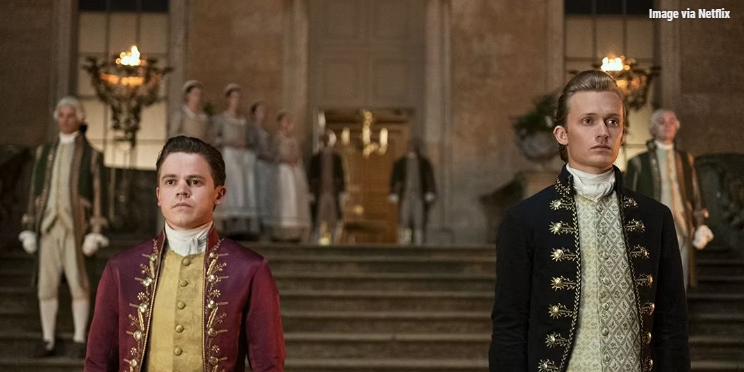 x
x
The romance fits into the story seamlessly, as both characters are a large part of the story independently. Brimsley is chosen to be Charlotte’s right-hand man before she arrives, never more than a few paces behind her, he necessarily becomes a large part of her life, and she quickly grows to trust him as he helps her bend the rules. Brimsley instructs Charlotte on how things work with the royal family once she learns to listen to him. The two develop a friendship, though their respective positions make it difficult. On the other hand, Reynolds is the King’s valet. Like Brimsley, he is always near George. Reynolds is a trusted confidant of George’s as well. He helps to conceal the King’s madness, refusing to let secrets slip, even to Brimsley. As significant characters, their romance is more than checking a representation box. Allowing them a side plot gives the characters more personality than the stoic shadows of the king and queen. And the conversations during their trysts help to disperse information about Charlotte and George’s plot.
The two men are dedicated to their work but meet in secret, when possible, establishing their own romance. When George and Charlotte are alone, they can sneak off together for their own relationship. The show doesn’t detail the beginning of this romance, but it certainly grows on-screen. As Charlotte and George spend more time together, Brimsley and Reynolds get the same luxury. Their positions mean as long as the king and queen remain united and happy, they can be together almost constantly without suspicion, a rare and fortunate circumstance for a gay couple in this time period. When Charlotte and George fall in love, Brimsley and Reynolds are able to realistically contemplate growing old together. Their relationship faces difficulties as Reynolds must lie to Brimsley to keep George’s secret. But they manage to work it out, and their younger versions are seen for the last time dancing together, slightly removed from the royal party. Though not a leading storyline, these characters fill in the representation with a relevant and meaningful love story.
‘Queen Charlotte’ Handles their Love Story Well
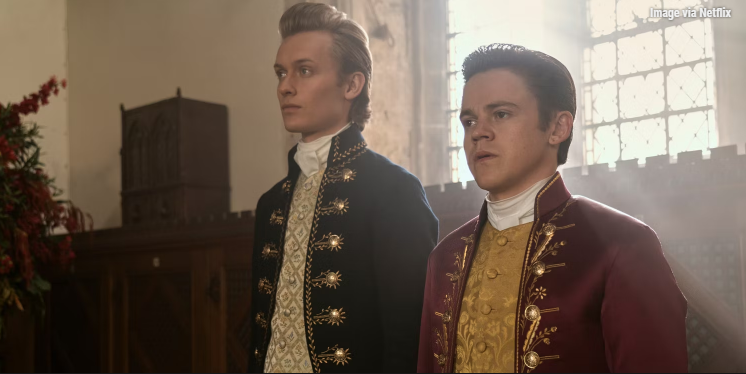
Reynolds and Brimsley may not have been a public relationship, but the series didn’t take the easy way out of having them fight prejudices and hate. Instead, they had a completely normal, if secretive, romance, allowing them to imagine a hopeful future where they spend their lives together. Brimsley and Reynolds’ positions make it easy to spend time together, and reasonable for them to never marry, meaning they needn’t be split apart by arranged marriages. While it would be realistic for a gay couple in this timeframe to be doomed based on societal pressure, Queen Charlotte takes a unique approach, giving them a mostly happy story. The final episode shows the older Brimsley dancing alone, mirroring their dance together. This suggests that Reynolds is no longer in his life, yet he seems to look upon the memories fondly. So perhaps it’s not an entirely happy ending, yet many of the older romances are not. Look at Charlotte and George or Violet mourning her husband. Like Brimsley and Reynolds, these couples were happy for a time, but love isn’t without its challenges. Brimsley and Reynolds may not have a leading romance, nor do they get a happy ending after the time jumps, but they are a well-rounded and positive depiction of a gay romance in the world of Bridgerton.
The inclusion of a queer relationship is a big step for the franchise. Bridgerton introduced Henry Granville (Julian Ovendon), an artistic friend of Benedict’s who is gay. Benedict’s attendance at Henry’s party and the chemistry the two men shared led to speculation of Benedict being gay. But as he has struck up a relationship with Madame Delacroix (Kathryn Drysdale), that seems less likely. Fans have theorized that the independently-minded Eloise Bridgerton (Claudia Jessie) may explore other sexualities due to her total rejection of societal expectations. Yet this has little more than hope to back it up. With the eight Bridgerton siblings each taking a turn as the lead for a season, it’s always possible that one or two may provide a leading queer relationship, but this would be a departure from Julia Quinn’s novels which the show is based on. Unless, and until, this happens, fans will have to be satisfied with secondary characters, such as Brimsley and Reynolds, being the LGBTQ+ representation in this universe. Yet their trailblazing relationship proved that there is room in the world of Bridgerton for happy couples of different sexual orientations.
